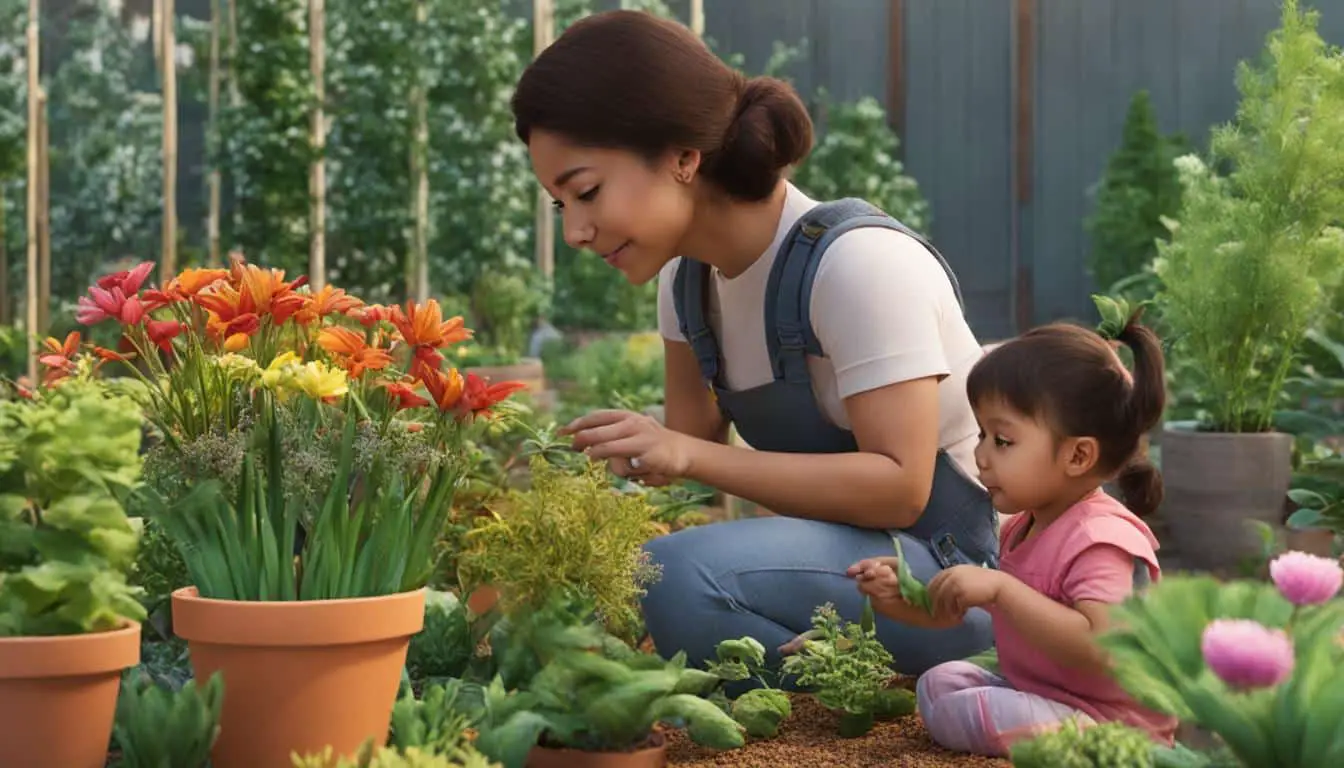Nurturing Your Child’s Curiosity: Tips and Ideas
As a parent, I understand how important it is to support and nurture a child’s curiosity. Curiosity is the driving force that encourages children to explore the world around them, learn new things, and develop critical thinking skills. In this article, we will discuss effective strategies for nurturing your child’s curiosity, helping them to develop into enthusiastic, lifelong learners.
By fostering curiosity, you can help your child grow and develop into a well-rounded individual. Curiosity leads to increased creativity, better problem-solving skills, and a thirst for knowledge that will benefit them throughout their lives. Let’s explore some strategies for nurturing child’s curiosity.
Key Takeaways
- Curiosity is essential for a child’s growth and development
- By encouraging exploration through play, children can learn and develop critical thinking skills
- Reading is a fantastic way to nurture a child’s curiosity
- Hands-on experiences and experiments provide an excellent way for children to explore and learn
- Asking questions is fundamental to nurturing curiosity
Encourage Exploration through Play
As parents, we know that play is more than just fun and games for children. It is a crucial part of their learning and development. Playing allows children to discover and explore their surroundings, characters and concepts, and it’s a natural way to foster curiosity. Encouraging exploration through play is a powerful tool. In this section, I will discuss how you can create a play-friendly environment, choose engaging toys and activities, and support your child’s natural inclination to ask questions and seek answers.
Create a Play-Friendly Environment: Set up a designated space in your home where your child can play freely, with minimal interruptions and distractions. It can be a corner of a room with a rug, pillows, and activities stored close by. The key is to make sure your child feels comfortable, safe and free to be creative. Some ideas include a dress-up station, building blocks, puzzles, books, and art supplies.
Choose Engaging Toys and Activities: Children are naturally curious and adventurous, keep this in mind when you choose their toys and activities. Anything that allows them to problem-solve, explore, and learn new concepts will help to nurture their curiosity. Consider open-ended toys such as building blocks or play-doh, which allow for creativity and imagination. Outdoor activities such as exploring nature, making mud pies or kite-flying will expand their knowledge and stimulate their senses.
TIP: Engage with your child while playing. Ask questions, explain concepts, or join in the fun. It’s an opportunity to strengthen your relationship with them and help them develop essential social and emotional skills.
Support their Natural Inclination to Ask Questions and Seek Answers: Children are naturally curious, and asking questions is their way of expressing it. Celebrate their curiosity and encourage them to ask questions about the world around them. Provide them with age-appropriate answers, challenge them to find their own answers and use their senses to explore. Be sure to highlight their achievements, it will foster their confidence to continue exploring and learning.
Foster a Love for Reading and Learning
Reading is essential for nurturing your child’s curiosity. Not only does it foster a love of learning, but it also opens up new worlds and perspectives. By encouraging a regular reading habit, you can help your child become a lifelong learner and discover their passions.
Here are some strategies to foster a love for reading:
- Set aside time for reading: Designate a specific time each day for reading. This could be before bedtime or during a quiet time in the afternoon. By sticking to a regular routine, you can make reading a habit.
- Choose age-appropriate books: Select books that are appropriate for your child’s age and reading level. This will help them to understand the material and stay engaged.
- Encourage active engagement: Ask your child questions about the story. This could include discussing the characters, setting, and plot. Additionally, encourage them to make connections to their own life and experiences.
- Incorporate learning opportunities: Choose books that teach your child about a new subject. For example, you could select a book about animals or science. This allows your child to learn while also enjoying a good story.
Incorporating learning opportunities into everyday activities can also support your child’s love for learning. For example, you could encourage them to read labels at the grocery store, or identify letters and numbers while on a walk. Additionally, you can expose them to a variety of subjects by taking them to museums, zoos, and other educational attractions.
https://www.youtube.com/watch?v=sweChCE89TM
“The more you read, the more things you will know. The more that you learn, the more places you’ll go.” – Dr. Seuss
Embrace Hands-on Experiences and Experiments
Hands-on experiences and experiments provide children with a great opportunity to cultivate their curiosity. Instead of passively receiving information, children can actively engage with their environment, building critical thinking and problem-solving skills along the way.
Here are some ideas for hands-on activities that can foster your child’s curiosity:
- DIY projects: Encourage your child to build things from scratch, whether it’s a fort, a birdhouse, or a model volcano. These projects teach children how to problem-solve and follow instructions, while also allowing them to express their creativity.
- Simple science experiments: Engage your child in scientific inquiry by conducting experiments at home. For instance, you can demonstrate the effects of static electricity with balloons, explore the properties of water with ice cubes, or create a lava lamp using everyday materials.
- Creative activities: Provide your child with materials to create art, such as drawing, painting, or sculpting. You can also encourage them to express themselves through music, dance, or theater. These activities allow children to explore their interests and develop their unique talents.
By embracing hands-on experiences and experiments, you’re helping your child become an active participant in their own learning. Not only will they be more engaged and motivated to learn, but they’ll also develop the skills and knowledge to succeed in the future.

Support Curiosity through Questioning
Asking questions is a crucial element in nurturing a child’s curiosity. Children naturally inquire about their surroundings, and as a parent, you can encourage this behavior by creating a supportive environment for them to ask questions.
For instance, instead of giving your child straightforward answers, encourage them to seek answers through research and investigation.
Open-ended conversations are another effective way to support curiosity through questioning. Ask your child what they think about a particular topic, and encourage them to defend their stance. This approach allows children to form opinions and ask deeper questions, thus taking charge of their curiosity.
When inquiring, it’s encouraged to avoid closed-ended questions that offer predetermined responses. Instead, use open-ended questions that compel them to think critically about the subject matter.
Cultivating an Inquisitive Mind
To cultivate curiosity, it’s essential to teach children how to ask the right questions. Encourage your child to ask, “why” and “how” questions to understand the events and circumstances in their world.
For instance, asking, “why is the sky blue?” or “how does the sun make light?” can lead to a discussion on scientific principles, expanding the child’s knowledge and curiosity.
It’s also important to teach children how to prioritize their questions. Create a table where they can list their questions, with the most pressing ones on top. This exercise fosters critical thinking skills, prioritization, and responsibility.

Encouraging children to be curious is essential as curiosity leads to creativity and ingenuity.
Unlocking a child’s curiosity is an active process that requires parental support to cultivate. By creating an environment that encourages questioning, embracing open conversations, and helping children ask the right questions, parents can unlock their child’s innate curiosity, expanding their knowledge and preparing them for lifelong learning.
Conclusion
In conclusion, nurturing your child’s curiosity is a crucial aspect of their development. By employing the strategies discussed in this article, you can create a home environment that encourages exploration, learning, and growth. Through play, reading, hands-on experiences, and questioning, your child can develop critical thinking skills, problem-solving abilities, and an enthusiasm for learning that will serve them well throughout their lives.
As a parent, I am committed to fostering my child’s curiosity and supporting their learning journey. By prioritizing their curiosity, we can help them develop into confident, knowledgeable individuals with a passion for exploration and discovery. I hope you found this article informative and helpful in your own efforts to nurture your child’s curiosity. Let us continue to encourage and support our children as they embark on their journey of lifelong learning.
FAQ
How can I nurture my child’s curiosity?
There are several strategies you can use to nurture your child’s curiosity. Some effective techniques include encouraging exploration through play, fostering a love for reading and learning, embracing hands-on experiences and experiments, and supporting curiosity through questioning.
How can I encourage exploration through play?
To encourage exploration through play, create a play-friendly environment that allows for open-ended exploration and discovery. Offer engaging toys and activities that spark curiosity and encourage your child to ask questions and seek answers.
What are some tips for fostering a love for reading and learning?
To foster a love for reading and learning, establish a reading habit by setting aside dedicated reading time each day. Select age-appropriate books that capture your child’s interests and encourage active engagement with the material. Additionally, expose your child to a variety of subjects and incorporate learning opportunities into everyday activities.
How can I embrace hands-on experiences and experiments?
Embracing hands-on experiences and experiments involves providing opportunities for your child to engage in tangible, interactive activities. Encourage simple science experiments, DIY projects, and creative activities that promote critical thinking skills and problem-solving.
How can I support curiosity through questioning?
Supporting curiosity through questioning means creating a supportive environment where your child feels comfortable asking questions. Encourage open-ended conversations and teach your child how to find answers through research and investigation.






